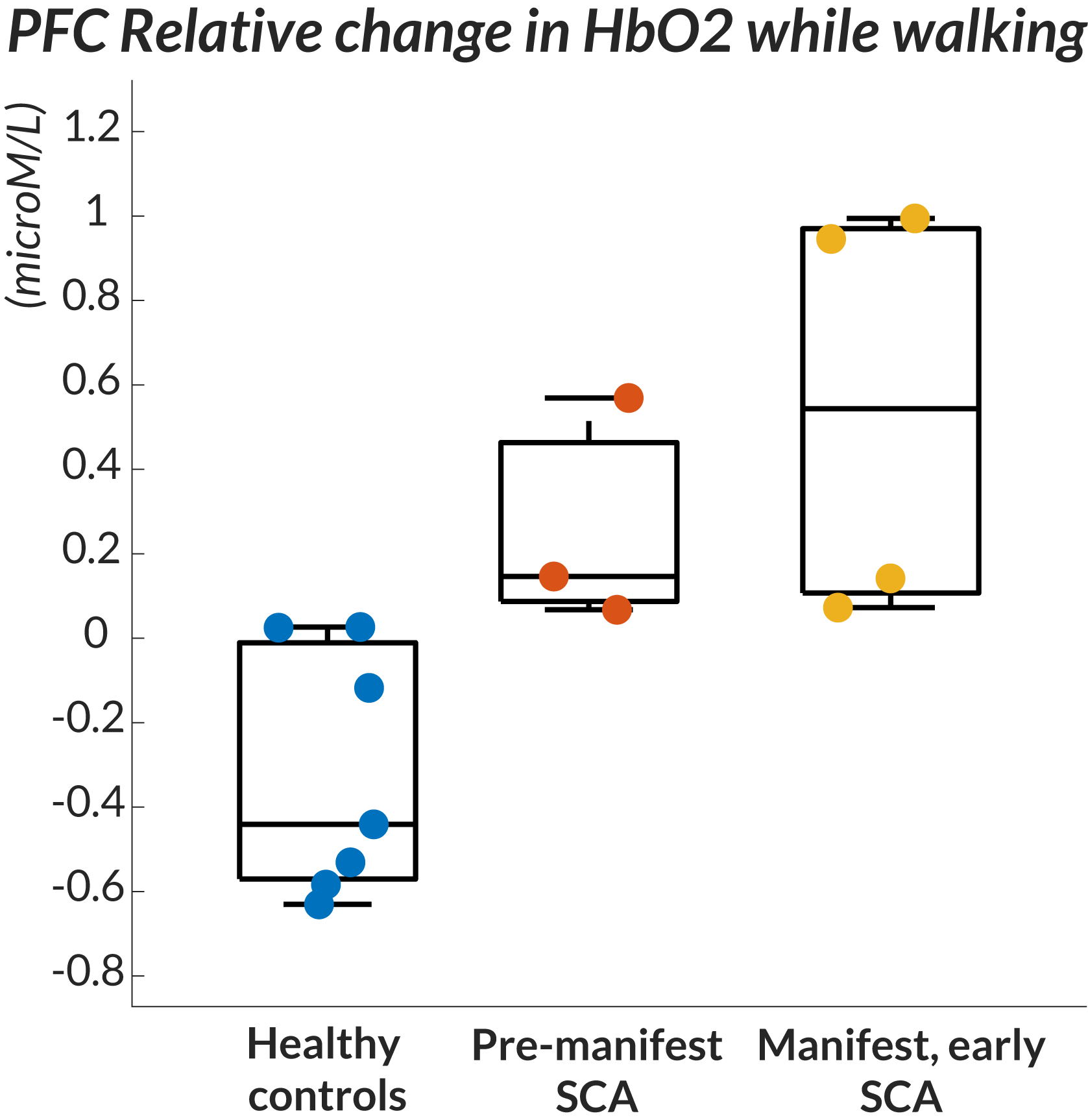Category: Ataxia
Objective: We investigated whether prefrontal cortex activity is increased during walking in pre-manifest and early spinocerebellar ataxia (SCA) compared to healthy controls.
Background: Spinocerebellar ataxia causes characteristic impairments of gait and balance that greatly impair quality of life. It has been hypothesized that compensation for impaired cerebellar control of gait and balance in SCA occurs via increased prefrontal cortex (PFC) control. Wireless, functional near-infrared spectroscopy (fNIRS) provides direct, physiological measures of PFC activity while performing actual movements. However, only a few studies have examined prefrontal activity in SCAs while walking and none in pre-manifest SCA (SARA<3).
Method: Seven participants with genetically-determined SCA (age: 48±11) and 7 age-matched healthy controls (age: 46.8±13) participated in the study. The Scale for the Rating and Assessment of Ataxia (SARA) was administered by a movement disorders specialist before the gait assessment. An 8-channel, mobile, functional-near-infrared spectroscopy (fNIRS), with two reference channels, was used to record changes in oxygenated hemoglobin (HbO2) and deoxygenated hemoglobin within the PFC. Participants walked for 2-minutes at a comfortable pace back and forth over a 10 meter distance, with a 180-degree turn at each end while wearing wireless, inertial sensors to derive gait and turning characteristics.
Results: Of the 7 individuals with SCA, three were classified as pre-manifest (SARA<3) and 4 as early SCA (SARA<10). PFC activity (HbO2) while walking was larger than controls of similar age in every patient with SCA. In addition, pilot findings showed that increased PFC activity was also present even in the pre-manifest stage of SCA (Fig.1).
Conclusion: Our pilot data suggest that PFC activity is increased in pre-manifest SCA, even when clinical scores are normal. Increased PFC activity is consistent with requirement for less automatic, cortical control of gait to compensate for impaired automatic, cerebellar control. Thus, we predict that gait characteristics will be related to increased PFC activity. fNIRS during functional activities could be employed to select SCA subjects to enroll and/or as an outcome measure in clinical trials for early treatments of these gait disorders. Studies in larger populations and test-retest reliability are needed to confirm these promising pilot findings.
To cite this abstract in AMA style:
V. Shah, D. Safarpour, F. Horak, C. Gomez, M. Mancini (). Cortical Correlates of Gait in Pre-Manifest And Early Spinocerebellar Ataxia [abstract]. Mov Disord. 2022; 37 (suppl 2). https://www.mdsabstracts.org/abstract/cortical-correlates-of-gait-in-pre-manifest-and-early-spinocerebellar-ataxia/. Accessed December 19, 2025.« Back to 2022 International Congress
MDS Abstracts - https://www.mdsabstracts.org/abstract/cortical-correlates-of-gait-in-pre-manifest-and-early-spinocerebellar-ataxia/

